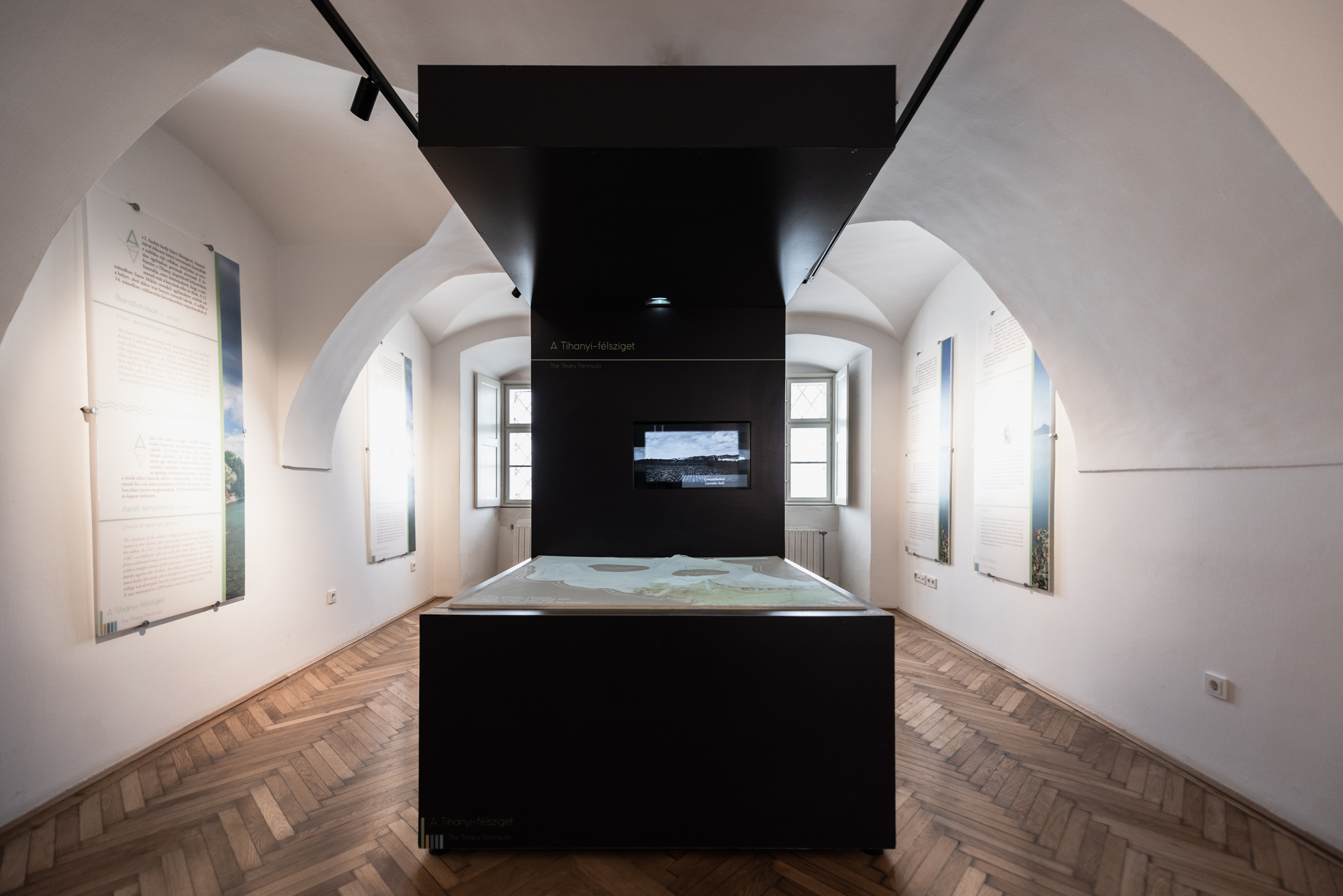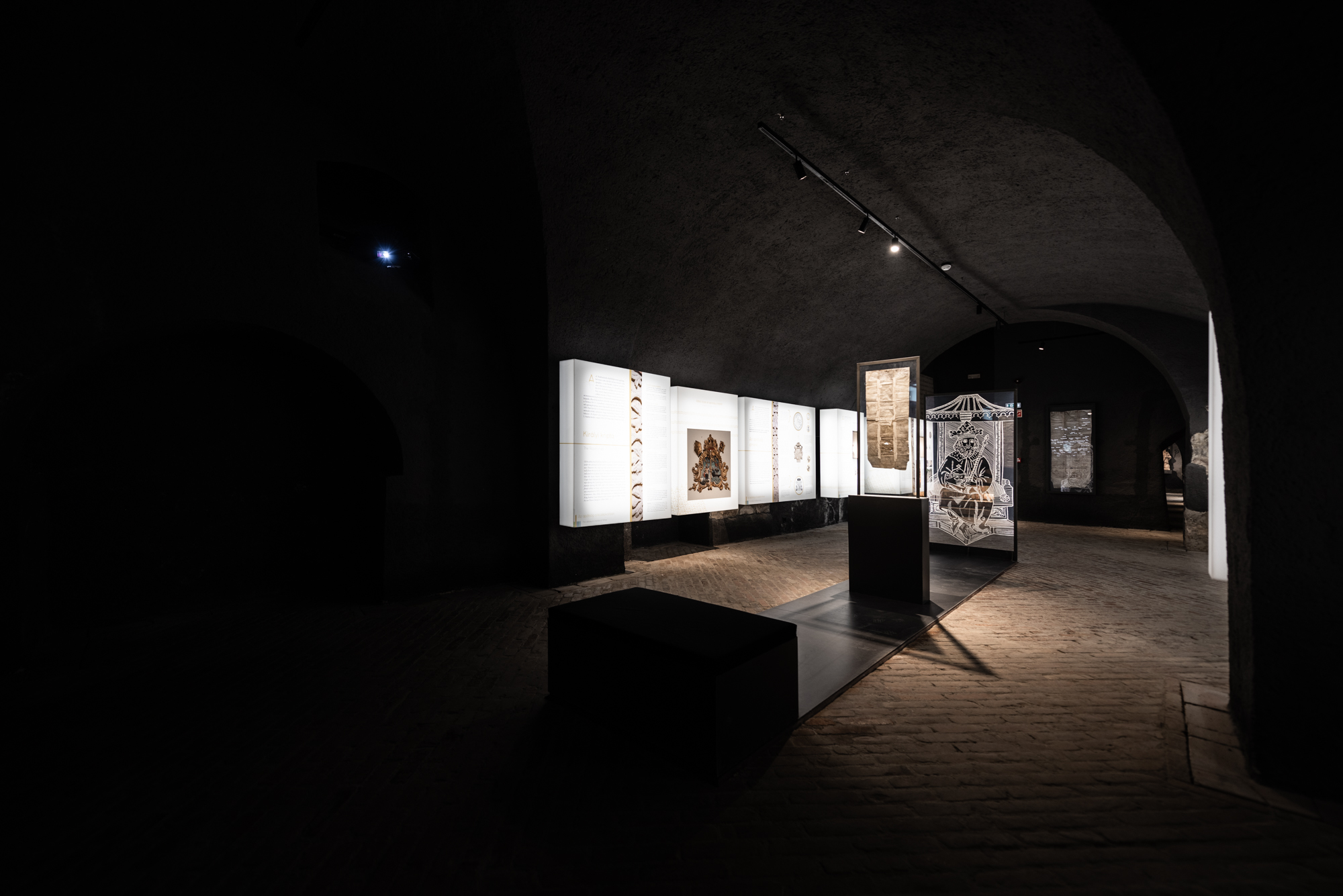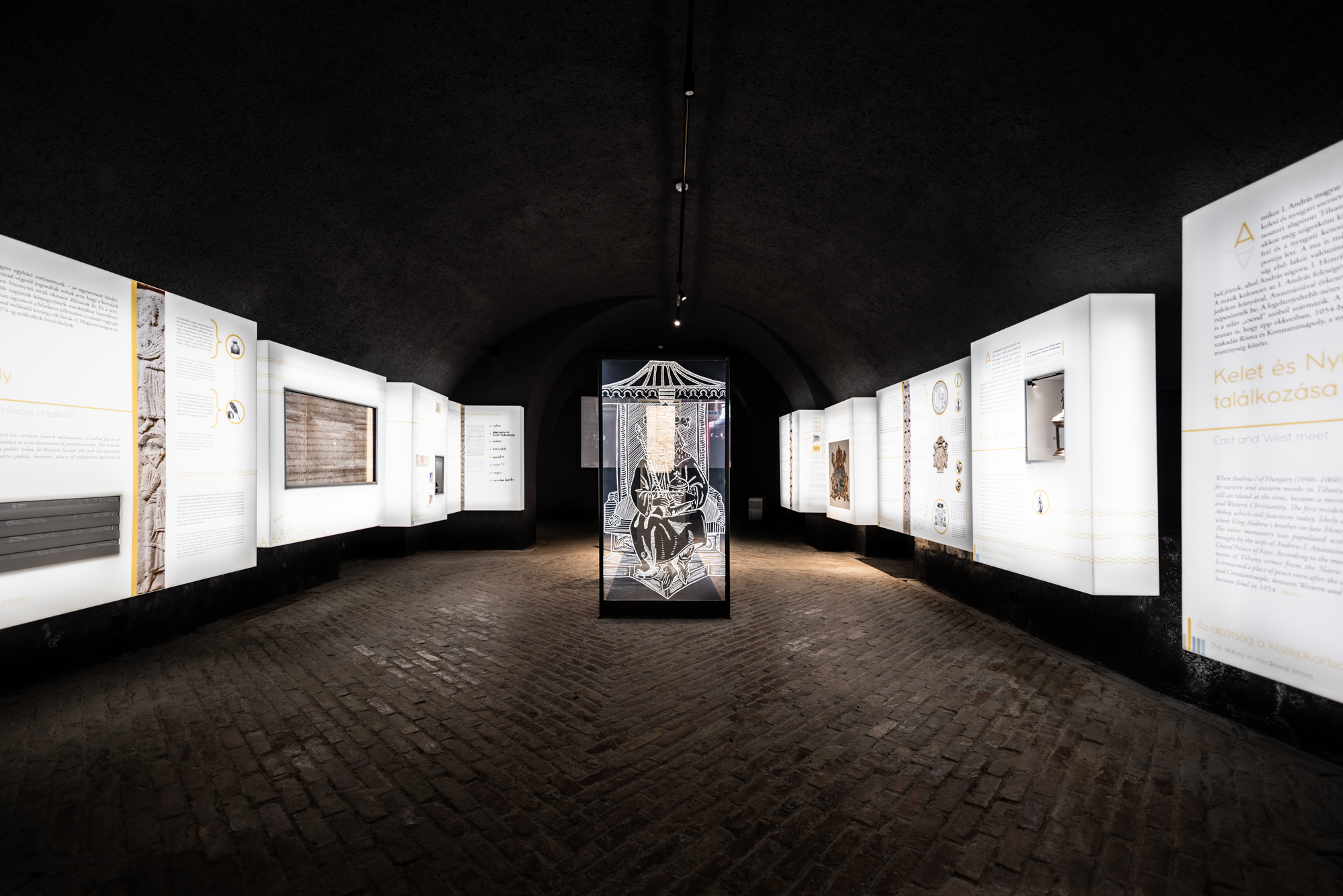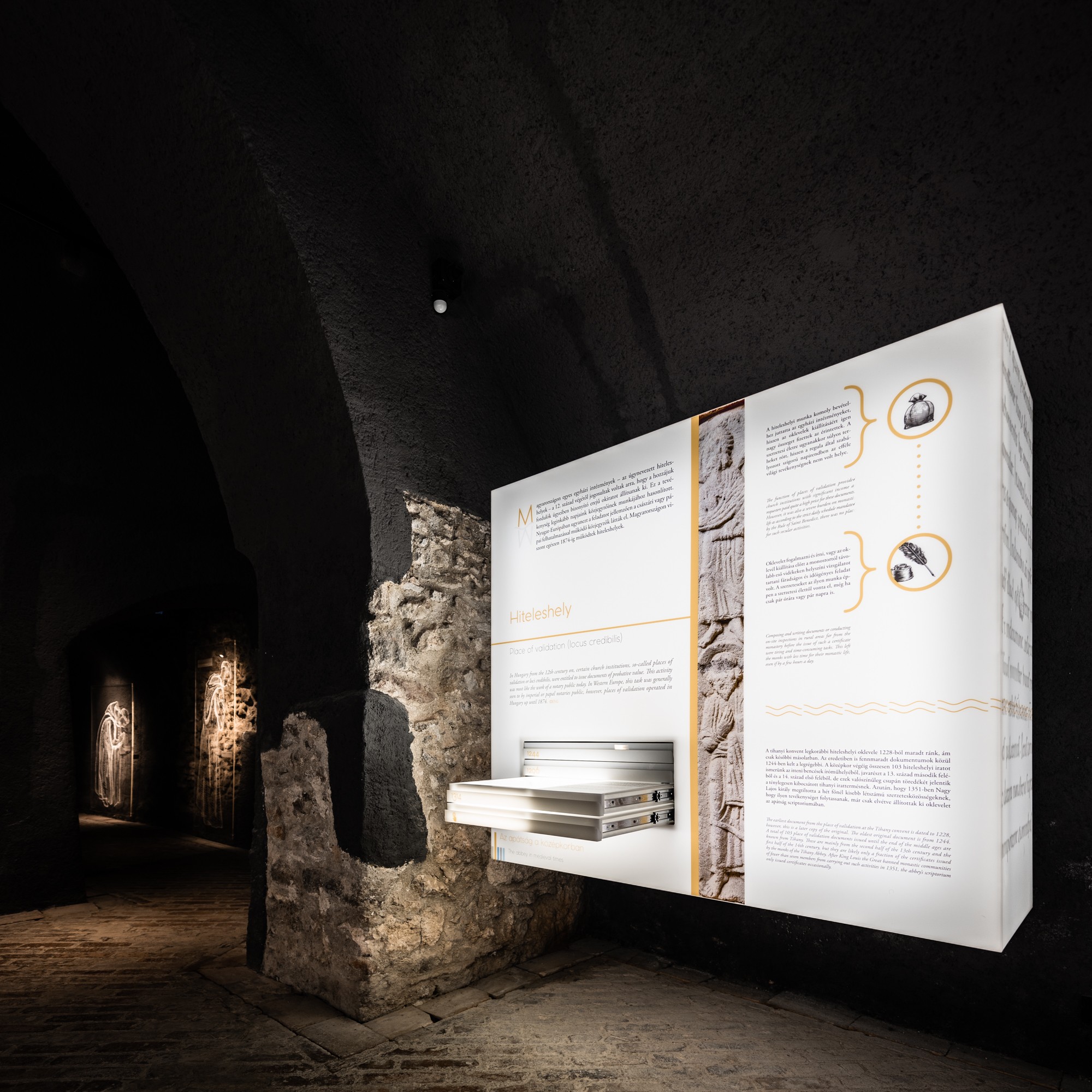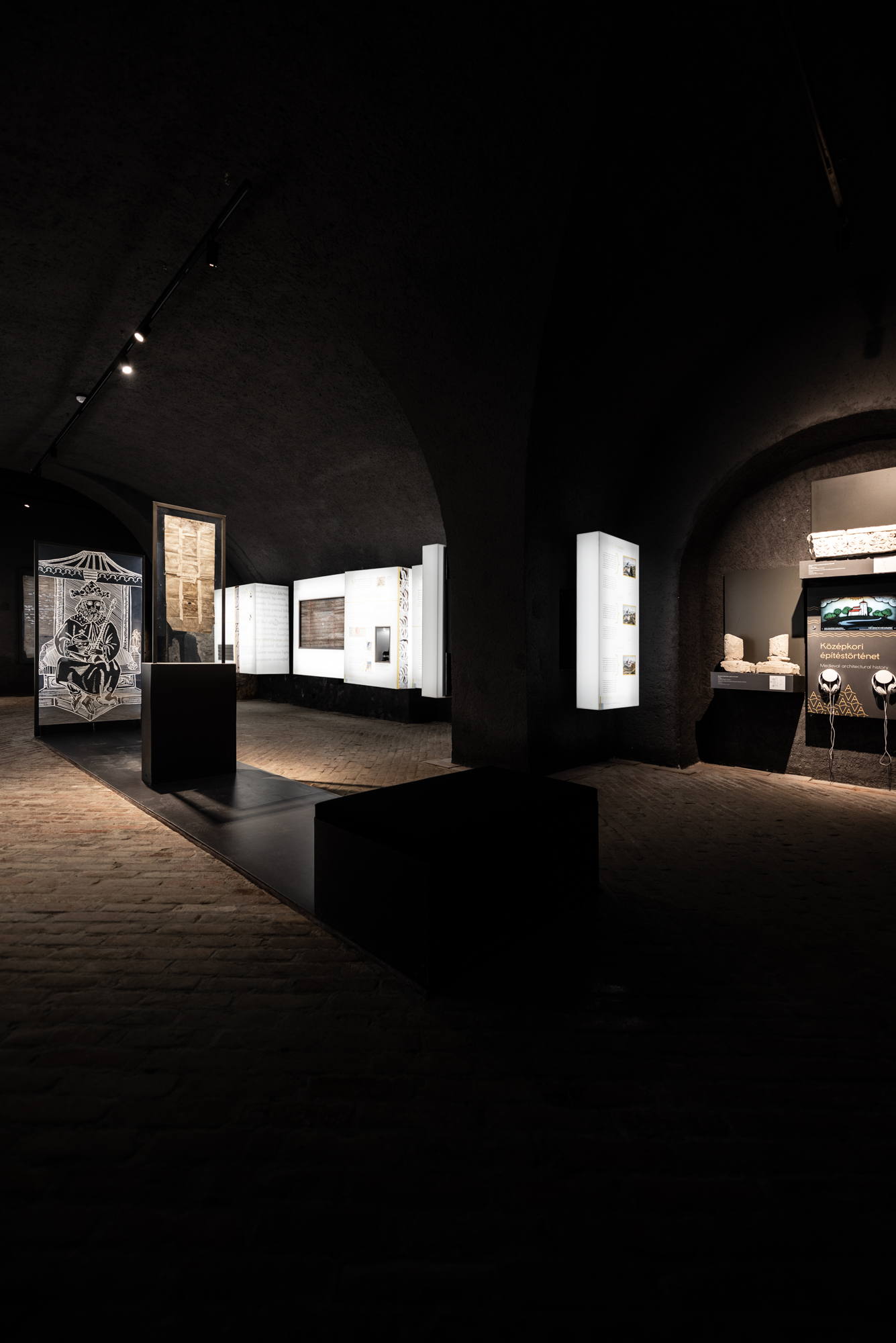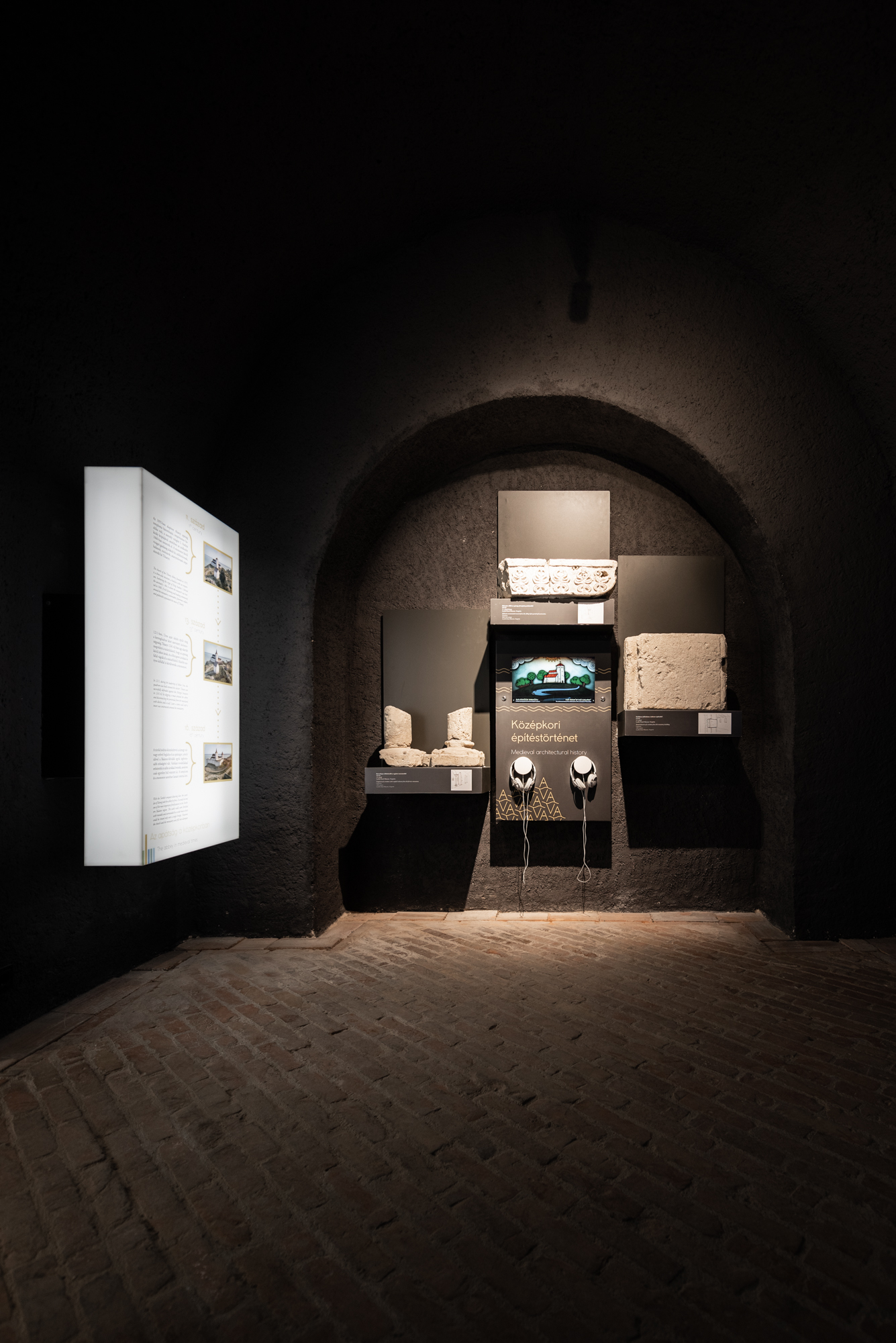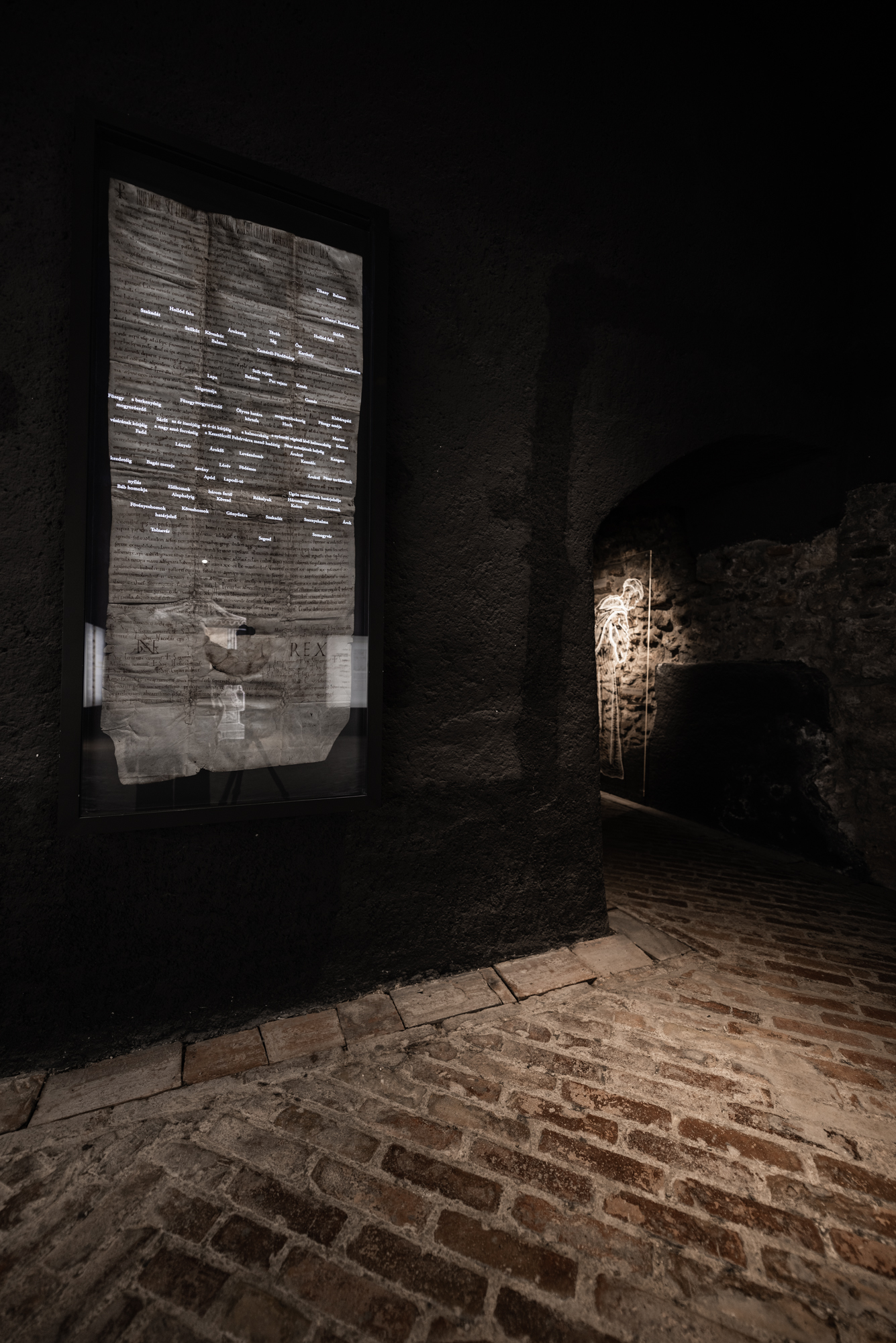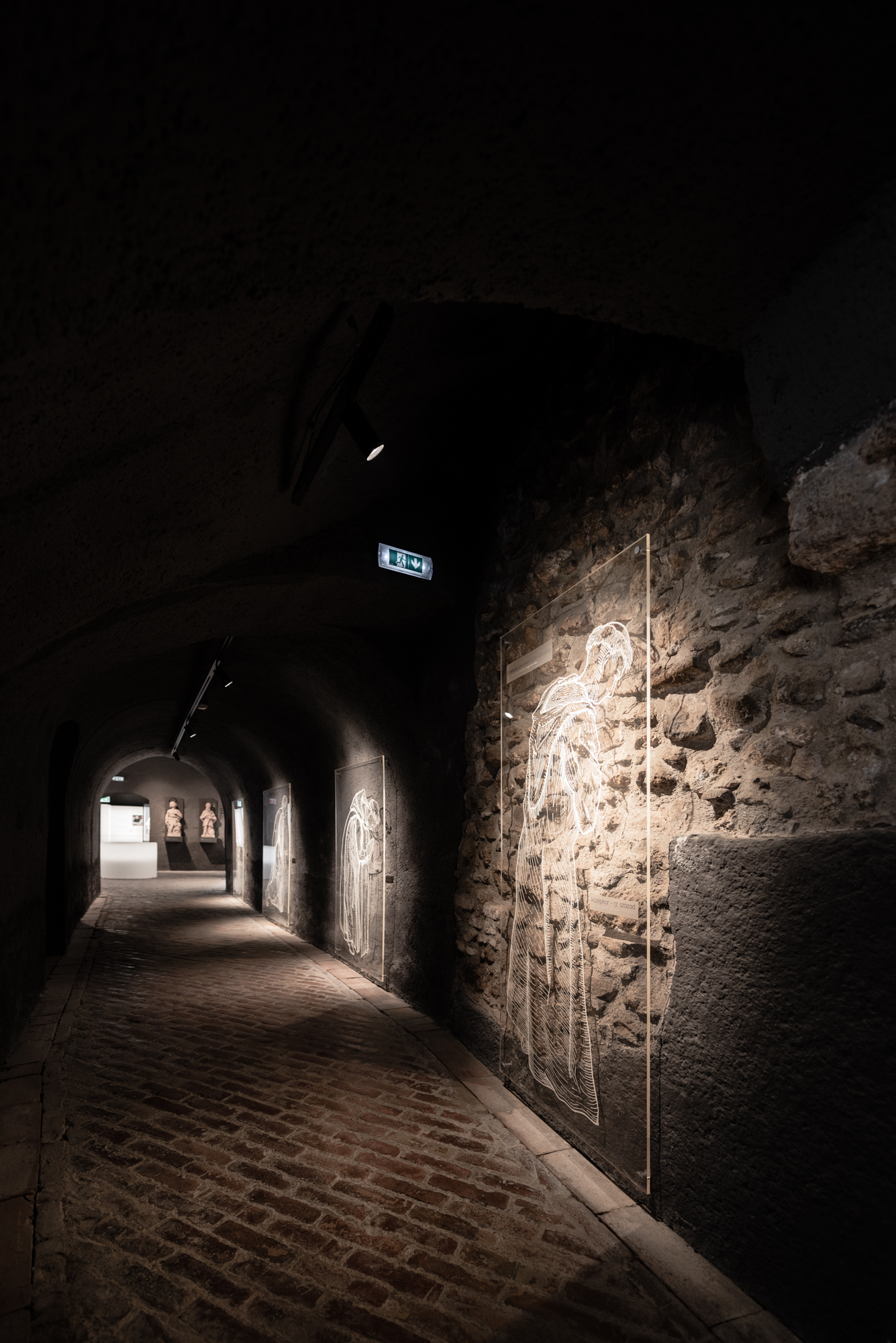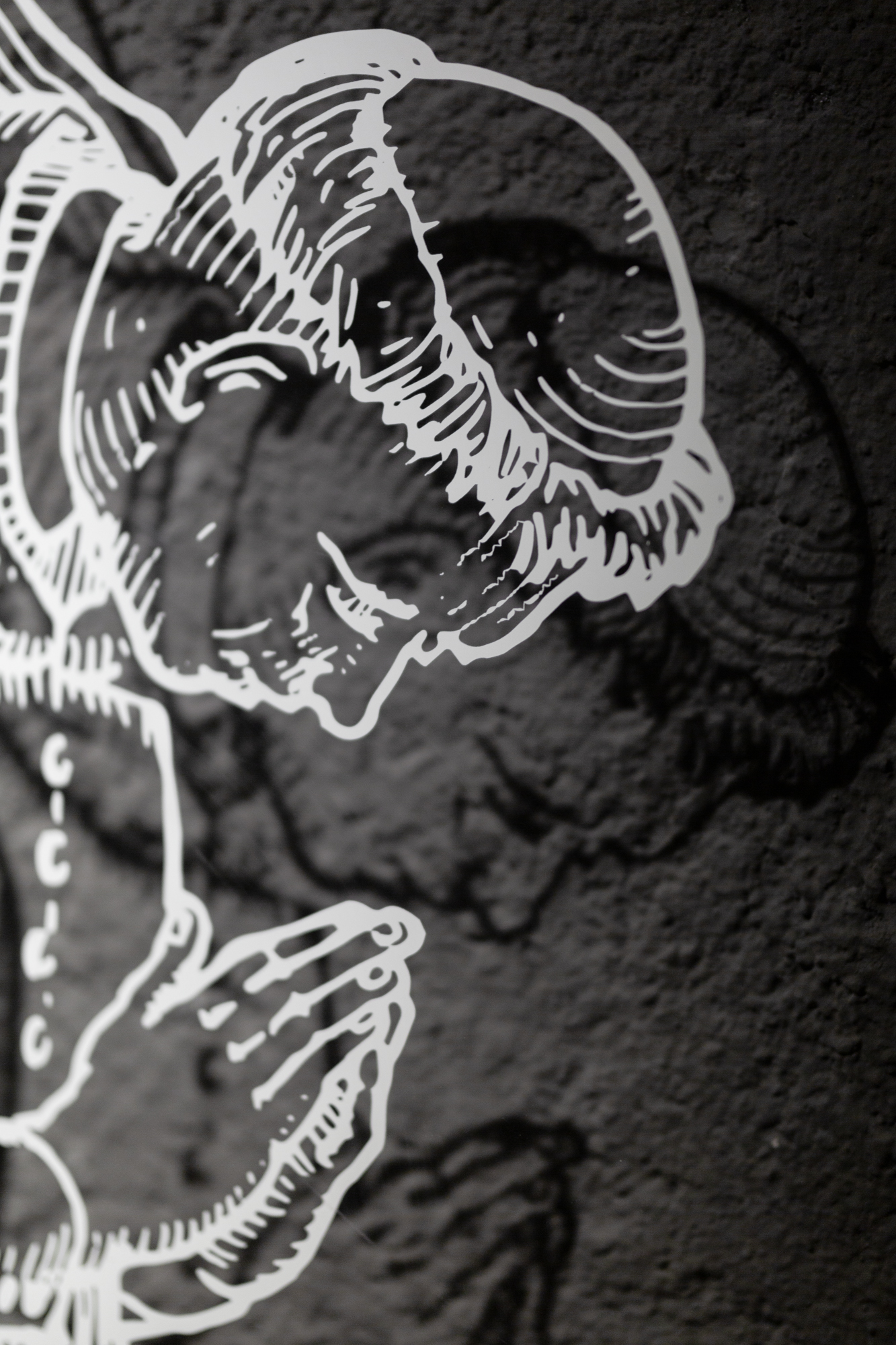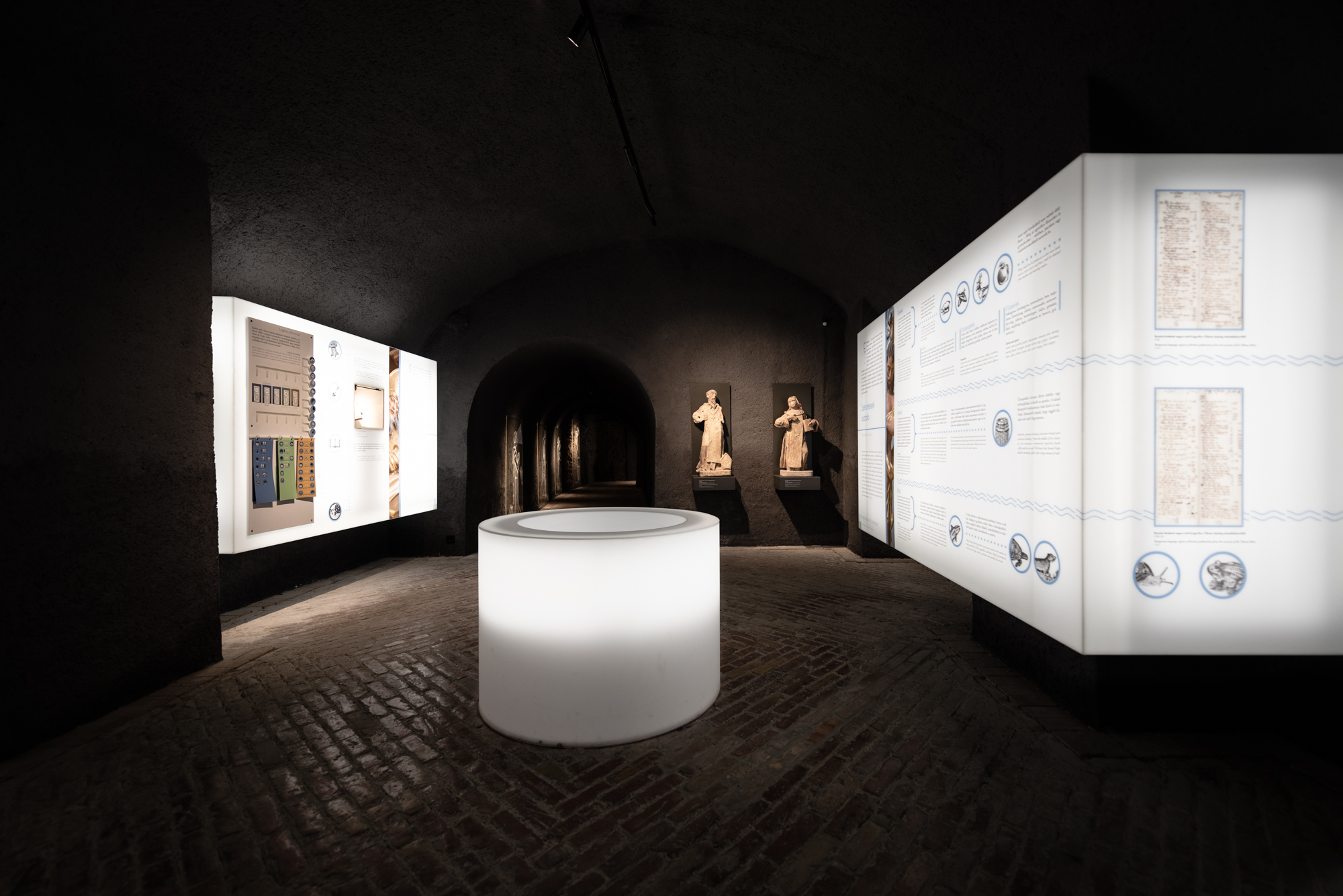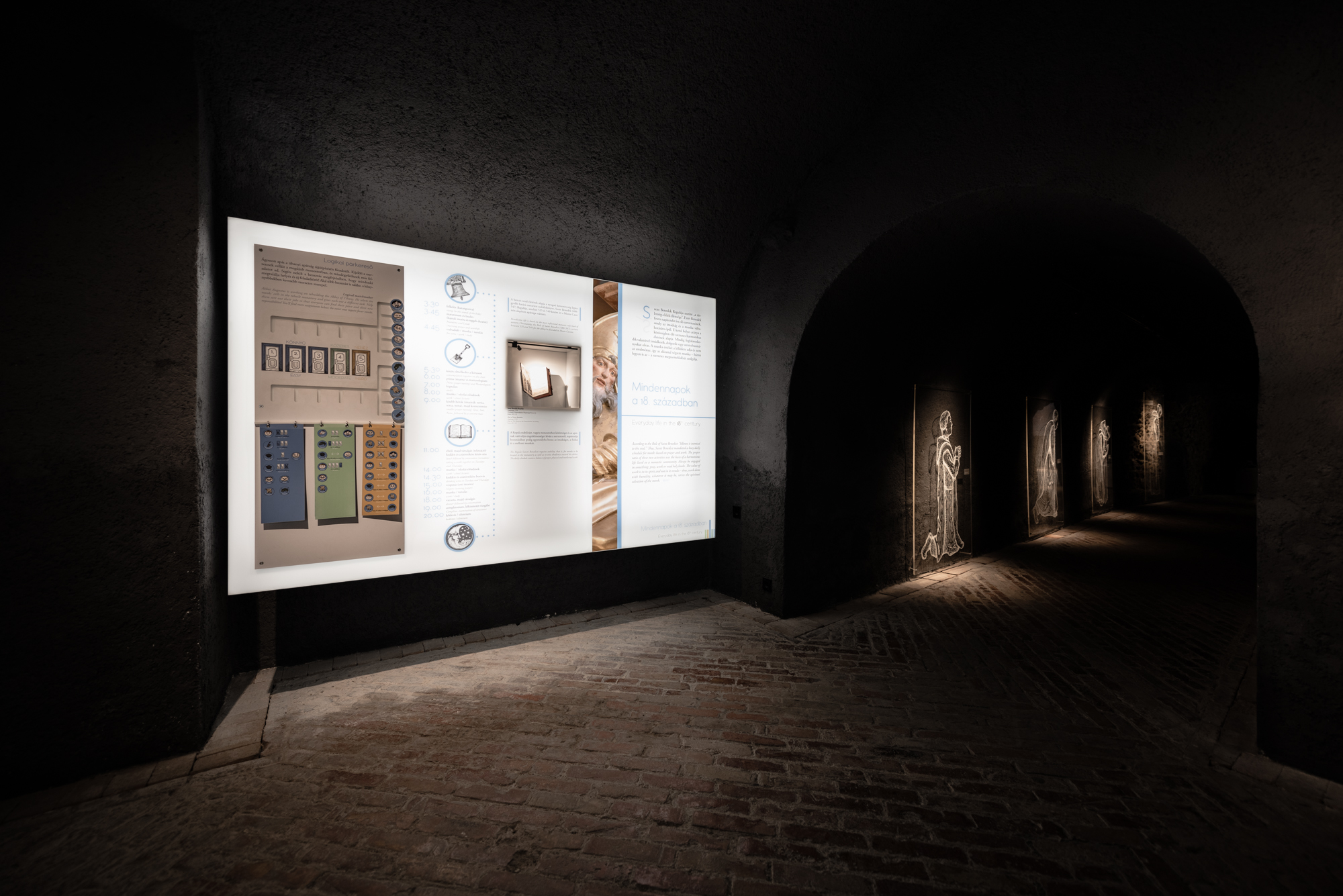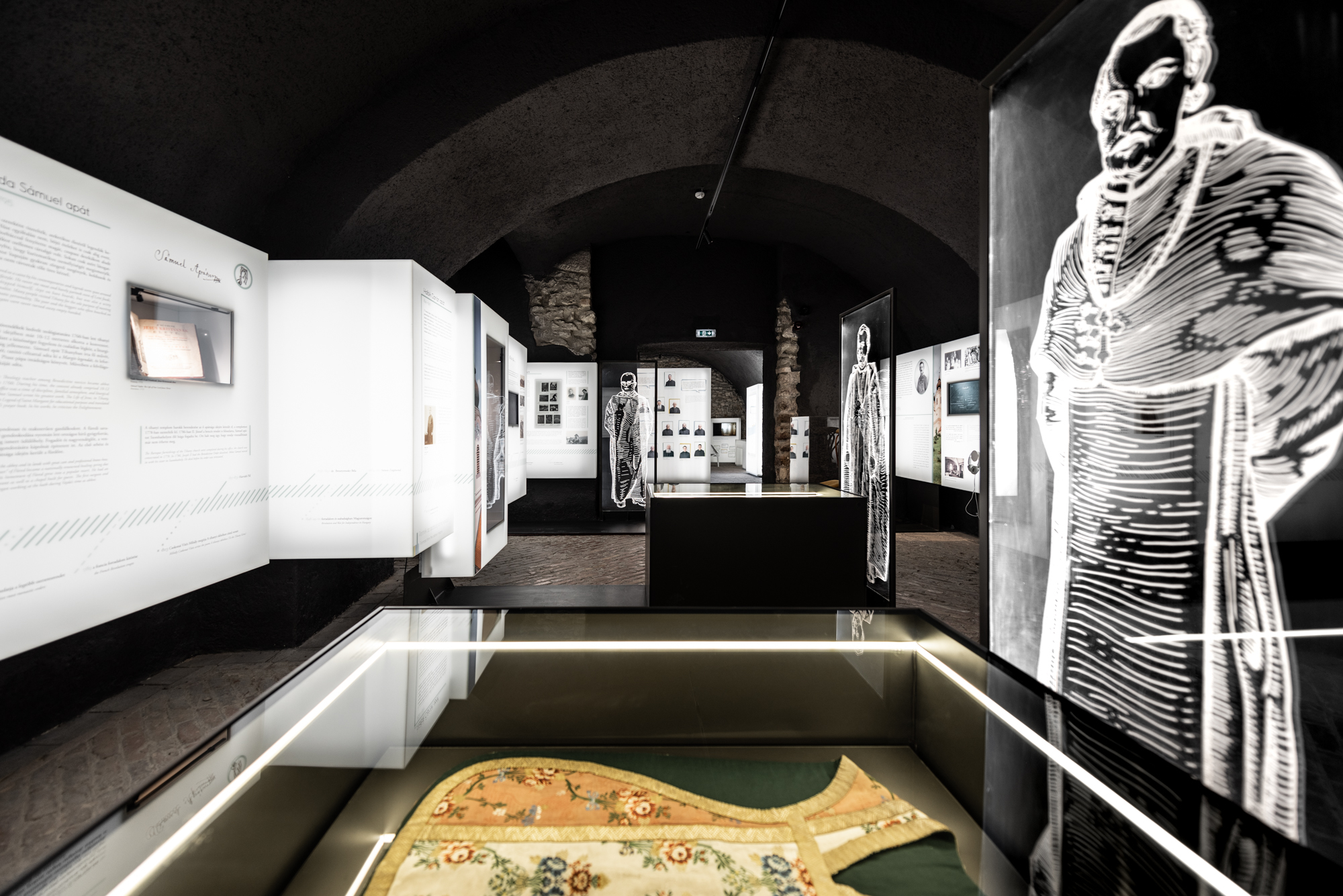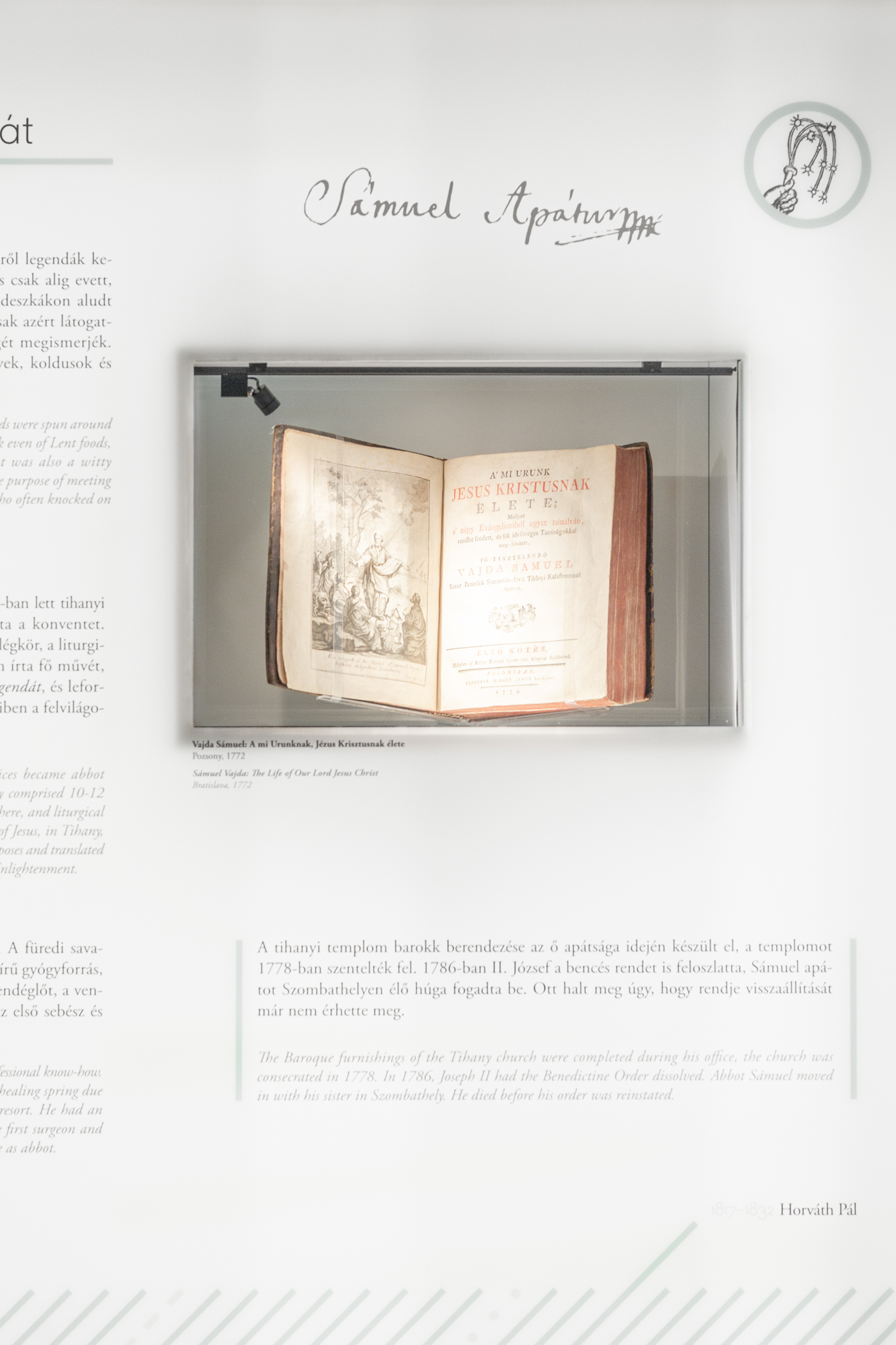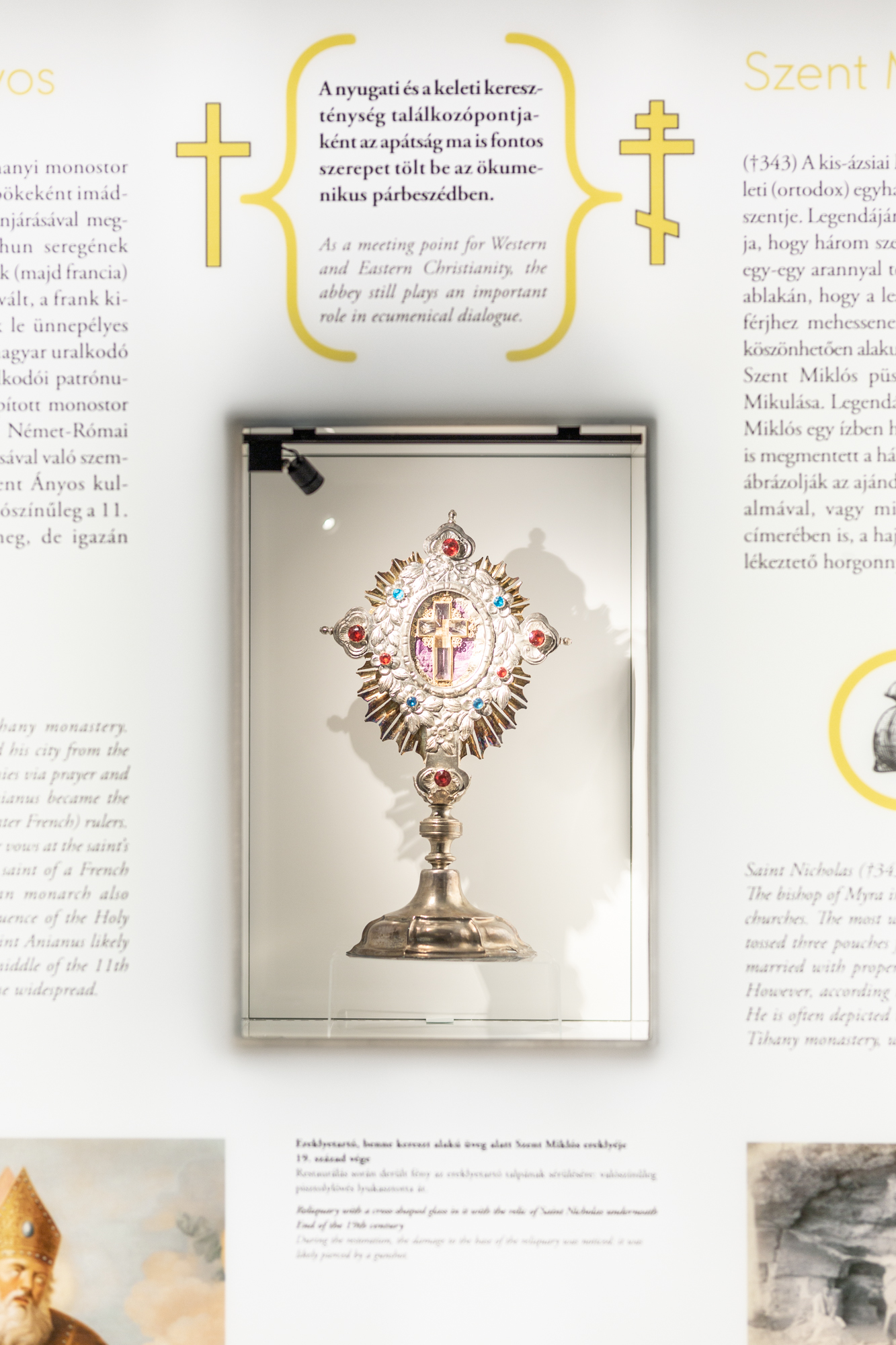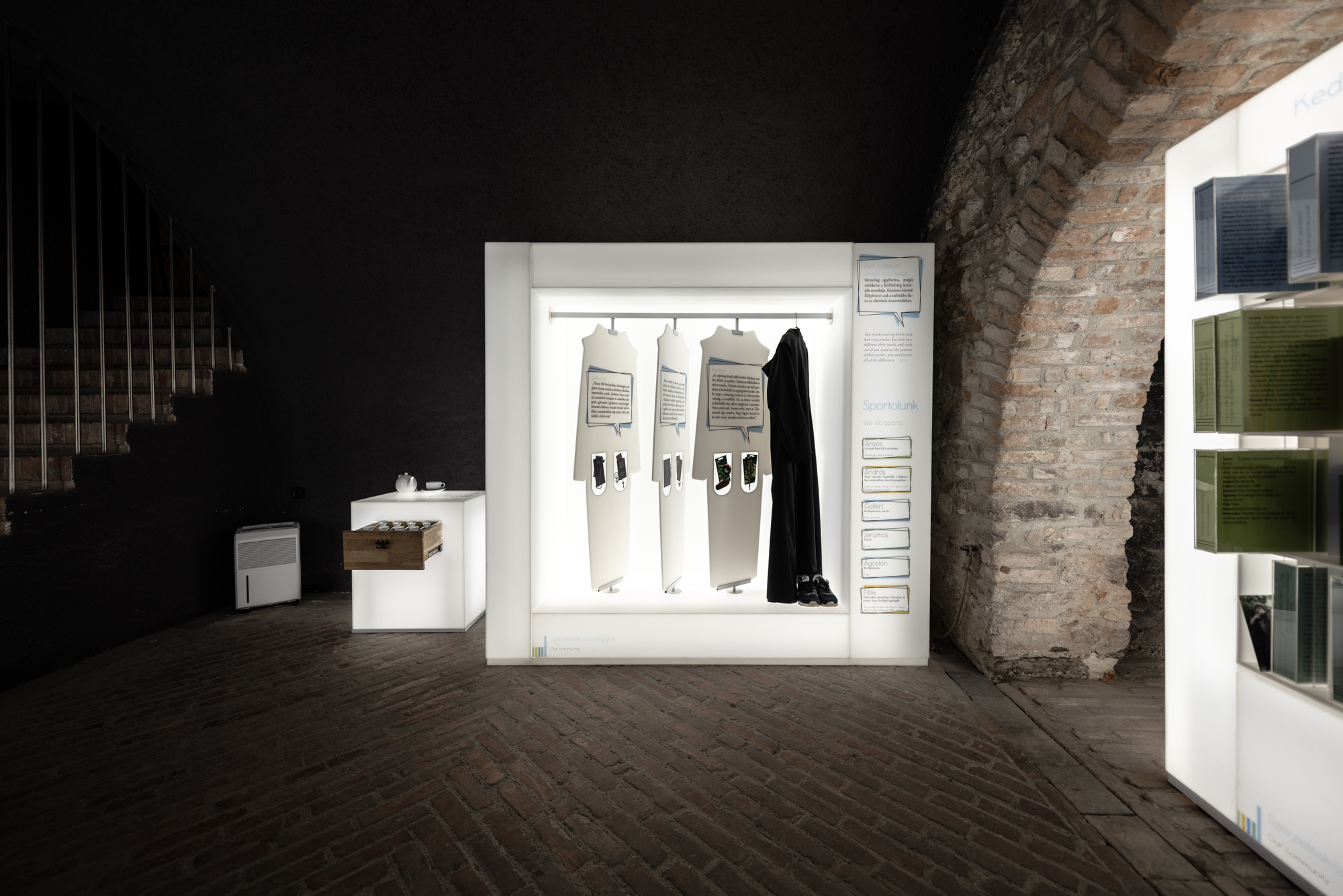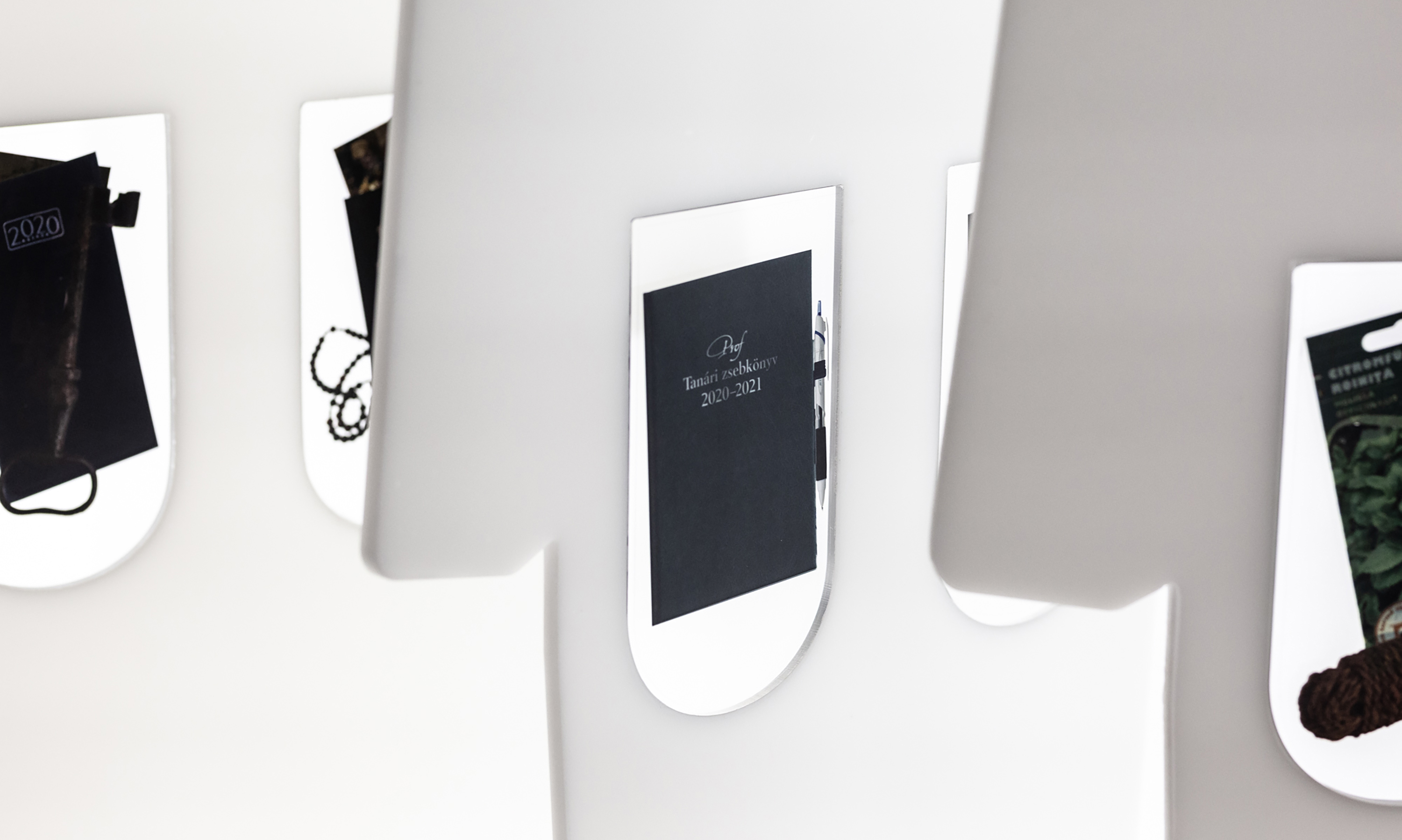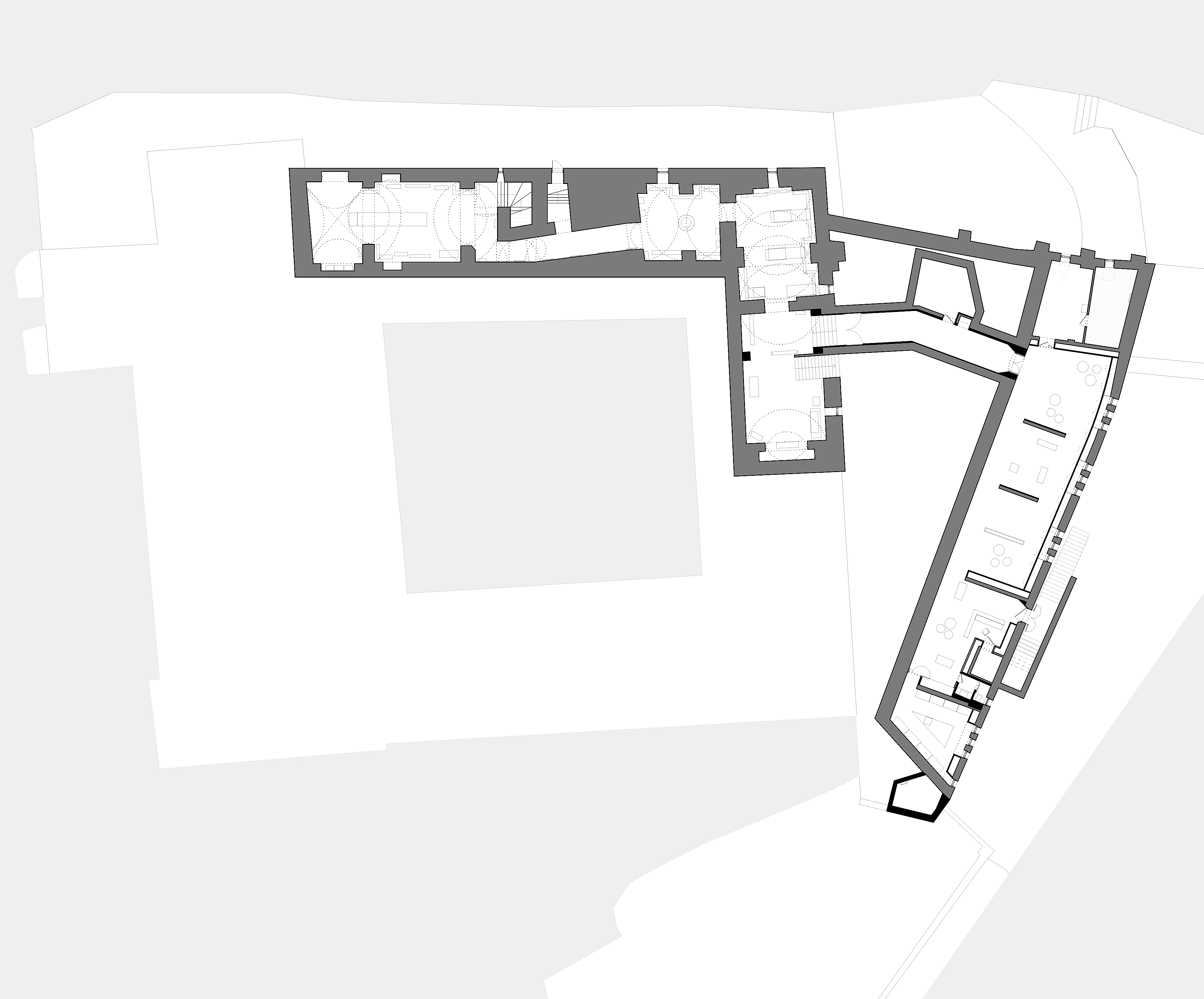Locality: 8237 Tihany, I. András tér 1., Hungary
Client: Hungarian Benedictine Congregation St. Ányos Benedictine Monastery
Area: 261 + 278 m2
Year: 2020
The uninsulated cellar and the extra humidity from the proximity of Lake Balaton are not ideal conditions for an exhibition. A further factor was that the existing cladding and wall surfaces of the recently restored underground spaces could only be touched in a minimal way, without damaging the structural elements, which was limited by the tight budget. It was possible to demolish the 20-25 cm of wall edging that framed the herringbone pattern flooring, and to cut the 4-5 cm thick rough plaster with minimal space for wiring. The basement could not be retro-insulated this time either, the air conditions were improved by opening up ventilation ducts that had been blocked up over time, and dehumidification equipment was installed in the still critical areas.
With the uniform use of materials and the graphic design of the exhibition elements, this space is also visually linked to the basement, but when visitors descend into the basement, they find themselves in a completely different atmosphere. A dark-toned row of rooms, reminiscent of medieval catacombs, welcomes guests, with light coming in from the floating opal plexiglass slits that carry the message. These bodies of light guide the visitor almost involuntarily around them. The most important figures in the story also appear as floating light drawings set in space. The glowing surfaces and the darkened vaults lend a sense of solemnity to the spaces, helping to immerse the viewer in the content.
The exhibition takes you out of the ordinary and into a more abstract world, presenting the history of the abbey in an experiential way. With lights, sounds and smells, it appeals to all the senses.
| architecture: | Csaba Balogh, Ágnes Deigner, Levente Sirokai, Péter Sónicz |
| Krisztina Ancza, Zsófia Dombrovszky, Zsófia Iván, Soma Pádár, Dániel Szitka, Dávid Toronyi, Ági Vértesy | |
| electricity: | Judit Balázs | Artvill Kft. |
| engineering: | Attila Lucz | HVArC Kft. |
| fire protection: | György Decsi | Fireeng Kft. |
| curator: | Mariann Szlavkovszky |
| graphic design: | György Mihalkov |
| photography: | Krisztina Ancza |
| publications: | 2022 Építészfórum – A Bencés Apátsági Kiállítás és Galéria |


